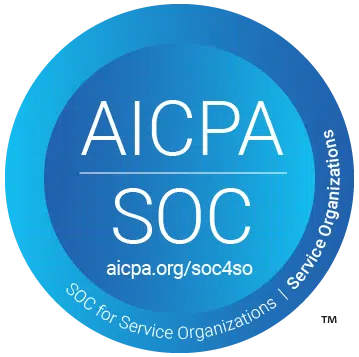
Governments today are increasingly collecting more data to improve operational efficiency and service delivery, yet many public servants are feeling overwhelmed, confused, or disengaged. This phenomenon, commonly referred to as "data fatigue", can stall innovation, hinder effective decision-making, and reduce trust in analytics tools and processes.
The issue isn't with data though. The issue lies in poor training and implementation.
When approached strategically, data can empower public servants, streamline services, and improve outcomes for citizens. The key lies in designing thoughtful, sustainable, and user-centric data implementation strategies that reduce friction and foster clarity.
What Is Data Fatigue?
Data fatigue is the cognitive overload that occurs when individuals or teams are inundated with too much data, too many dashboards, or overly complex reports, without clear direction, tools, or time to act on them. It results in paralysis by analysis, lower engagement, and reduced data-driven decision-making.
The Roots of the Problem
Before proposing solutions, it's important to understand the systemic factors contributing to public sector data fatigue:
1. Siloed and Duplicative Systems
Many departments collect similar data but store it in incompatible formats or legacy systems that don't communicate. This results in duplication, wasted effort, and confusion about which version of the data is most reliable.
2. Dashboards Without Direction
Tools like Power BI or Tableau are powerful, but without clearly defined use cases, they often become cluttered with charts that serve no actionable purpose. As McKinsey notes, "data democratization" without guidance often leads to surface-level use or outright disengagement.
3. Low Data Literacy
A data strategy is only as strong as its users. Many public sector staff lack training to interpret or question dashboards, leading to a widening gap between analysts and decision-makers.
4. Compliance Over Impact
Data collection is often compliance-driven, gathered to satisfy funders or legislation, rather than aligned to mission-critical decisions or public value. This reduces frontline buy-in and long-term utility.
How Proper Implementation Prevents Fatigue
Good implementation isn't just technical; it's cultural, structural, and human. Here's how governments and agencies can design better systems to avoid burnout and bring clarity to their data journey.
1. Emphasize Purpose and Context Over Tools
Effective data implementation starts by clearly defining the purpose and context in which data will be used. Before selecting any platform or software solution, organizations must first identify the specific decisions that need to be supported, the individuals or teams responsible for making those decisions, and the types of data required to inform them.
This process should include a thorough assessment of existing workflows, decision cycles, and strategic priorities. Once these elements are clarified, data systems can be designed or selected to directly support these objectives, ensuring alignment between technical capabilities and operational needs.
2. Streamline the Reporting Environment
A common contributor to data fatigue is the existence of fragmented, duplicative, or overly complex reporting systems. Public sector organizations often rely on multiple, disconnected tools and databases, leading to inefficiencies, data inconsistencies, and analytical redundancies. To address this, agencies should evaluate their reporting ecosystems with the goal of consolidation and simplification.
This includes integrating upstream data sources where feasible, adopting standardized metadata protocols to ensure consistency, and reducing the overall number of dashboards and reports in circulation. Streamlining reporting not only reduces cognitive load for users but also improves data accuracy and accessibility.
3. Promote Purposeful Data Use Over Accumulation
Rather than collecting large volumes of data without a defined purpose, organizations should foster a culture that emphasizes relevance, clarity, and impact. Data should be collected intentionally, based on well-articulated needs, and evaluated for its utility in supporting actionable insights.
Public servants should be engaged in defining what data is meaningful within their operational context and how it should be applied. Creating this kind of culture requires aligning data collection practices with organizational goals, clarifying expectations around use, and reducing the burden of unnecessary or duplicative reporting.
4. Develop Data Literacy Across All Roles
To fully realize the value of data, it is essential that individuals at all levels of an organization possess the necessary skills to interpret and apply it appropriately. This includes not only technical staff but also program leads, administrative personnel, and senior decision-makers.
A baseline understanding of data concepts, such as how data is sourced, what it represents, and how it can be misinterpreted, should be integrated into organizational training and professional development initiatives.
By broadening data literacy, agencies enhance their ability to make informed decisions, increase confidence in analytics tools, and reduce reliance on centralized experts for basic interpretation.
5. Establish Robust Governance and Stewardship Structures
Clear governance frameworks are critical to ensuring the reliability, consistency, and credibility of data assets. This involves assigning specific ownership roles, defining data management protocols, and documenting sources, definitions, update frequencies, and permissions.
Without strong data governance, organizations risk confusion over data accuracy, conflicting interpretations, and erosion of trust in analytical outputs. Stewardship roles should be embedded within teams to ensure data quality is maintained over time, and that usage remains aligned with both organizational policy and public sector accountability standards.
6. Implement Gradually with Iteration and Feedback
Large-scale data initiatives should not be launched all at once. Instead, implementation should follow an iterative process, starting with small-scale pilots that are tested in real-world contexts. This allows for meaningful feedback from users, identification of potential barriers, and continuous refinement of tools and processes.
Iterative scaling ensures that solutions remain responsive to user needs and operational realities, rather than imposing rigid structures that may not be fit for purpose. A gradual approach also helps build confidence in the system, increases user adoption, and prevents the overload that can accompany sweeping, one-size-fits-all deployments.
Conclusion: Replacing Fatigue with Focus
Preventing data fatigue isn't about using less data — it's about using it better. The public sector has a responsibility to ensure that its data systems are usable, purposeful, and empowering for the people who rely on them. That means:
- Starting with problems, not platforms
- Building literacy and trust, not just dashboards
- Prioritizing governance and collaboration over complexity
At Bronson Consulting, we specialize in helping public sector organizations implement data strategies that reduce overload and improve impact. If your organization is feeling overwhelmed by data, or unsure how to use it effectively, we can help.





